Lakeview Community Selects Sasaki for Master Plan
Sasaki joins the team that is reenvisioning the future of this Canadian neighborhood on the bank of Lake Ontario
 Sasaki
Sasaki
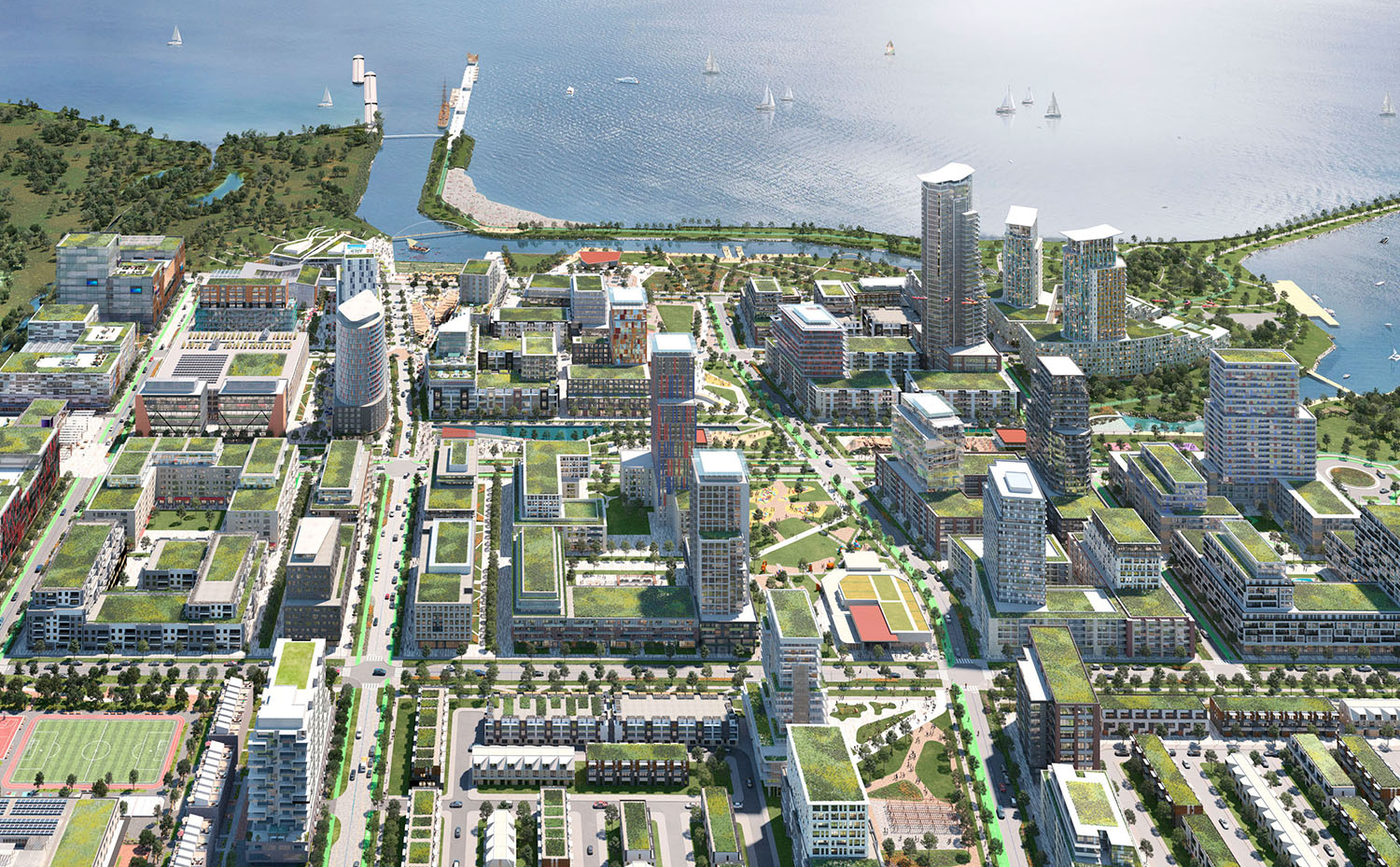
Once the site of an infamously prominent coal plant on Lake Ontario’s shore, Lakeview has become a symbol of the community’s dreams for what Mississauga’s waterfront can be
Once the site of a huge and infamously prominent coal power plant on Lake Ontario’s shore, the Lakeview site has become a symbol of the community’s visions and dreams for what the city of Mississauga’s waterfront can be.
The proposed master plan will reutilize this remediated brownfield site to create a mixed-use development on the lakefront where there was previously only industry. This will provide thousands of new residents and workers with connection to the lake, and will also enable the existing surrounding communities to reconnect with Lake Ontario. The new district will create a strong heart for the entire southern portion of Mississauga, a city of one million inhabitants, as well as a transit-supported new community that fulfills the progressive goals of the Greater Toronto Area to put more people close to mass transit. The 177-acre development provides much needed housing, retail and cultural facilities, an innovation district with employment opportunities, an urban school, and a 50-acre park network. The new Lakefront Park provides a missing link in the heavily-utilized but previously discontinuous Waterfront Trail; a 3000-km trail that connects 140 communities, and three Great Lakes.
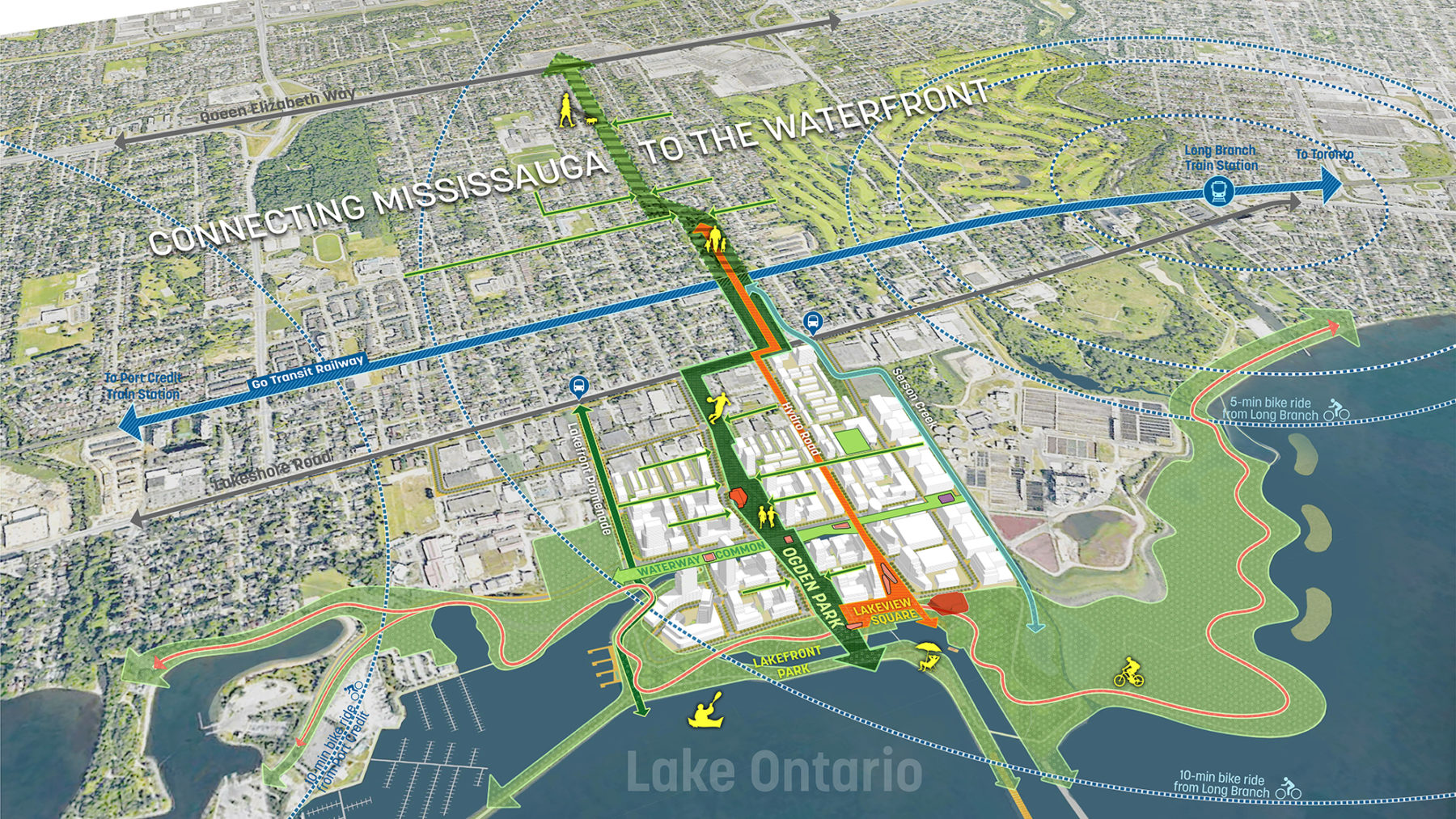
Lakeview connects the city of Mississauga to the Lake Ontario waterfront
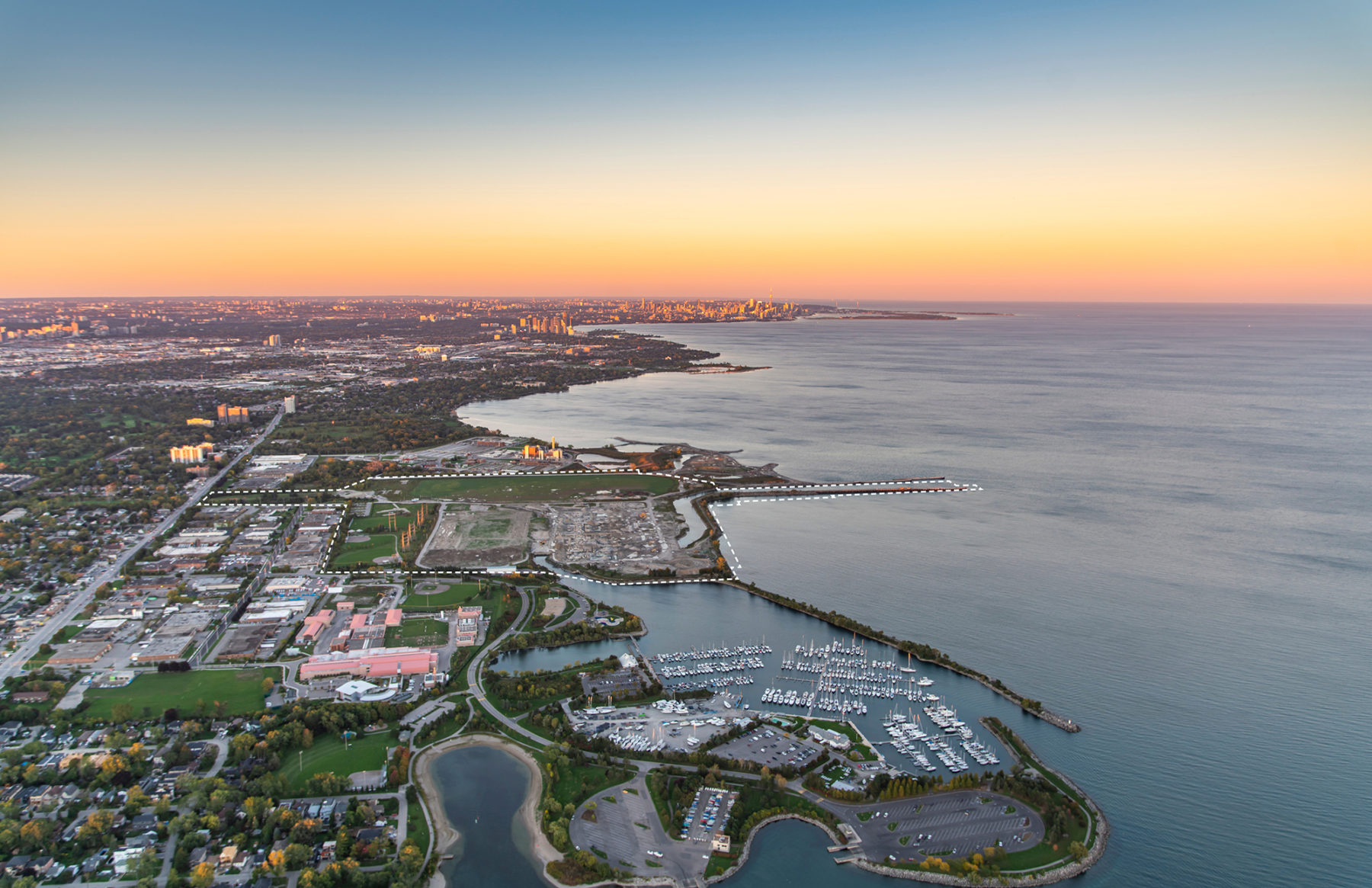
Situated on Lake Ontario, the district will complete the waterfront park network and capture views of downtown Toronto
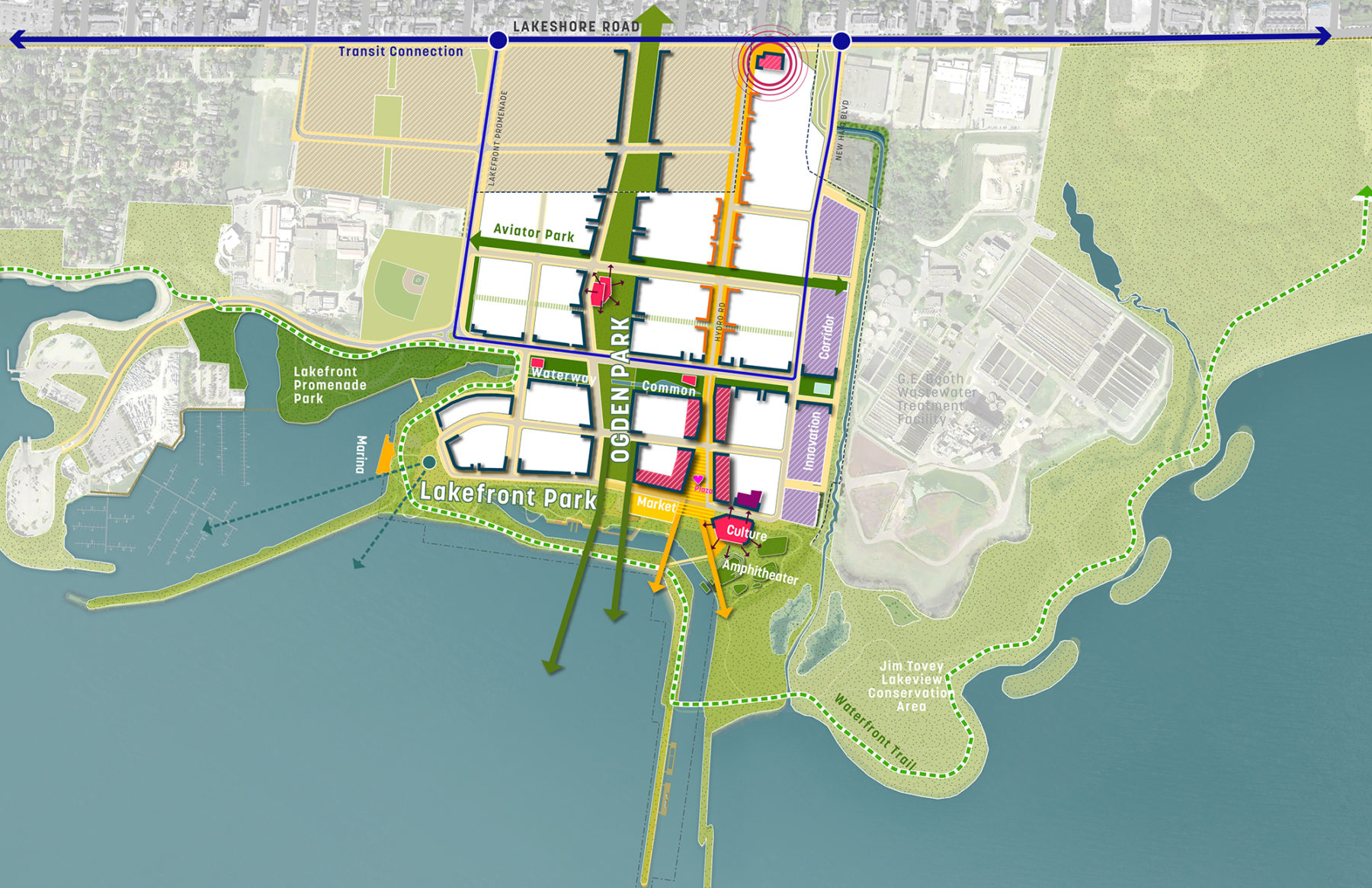
A central park connecting from the major street to the water is a key component of the plan
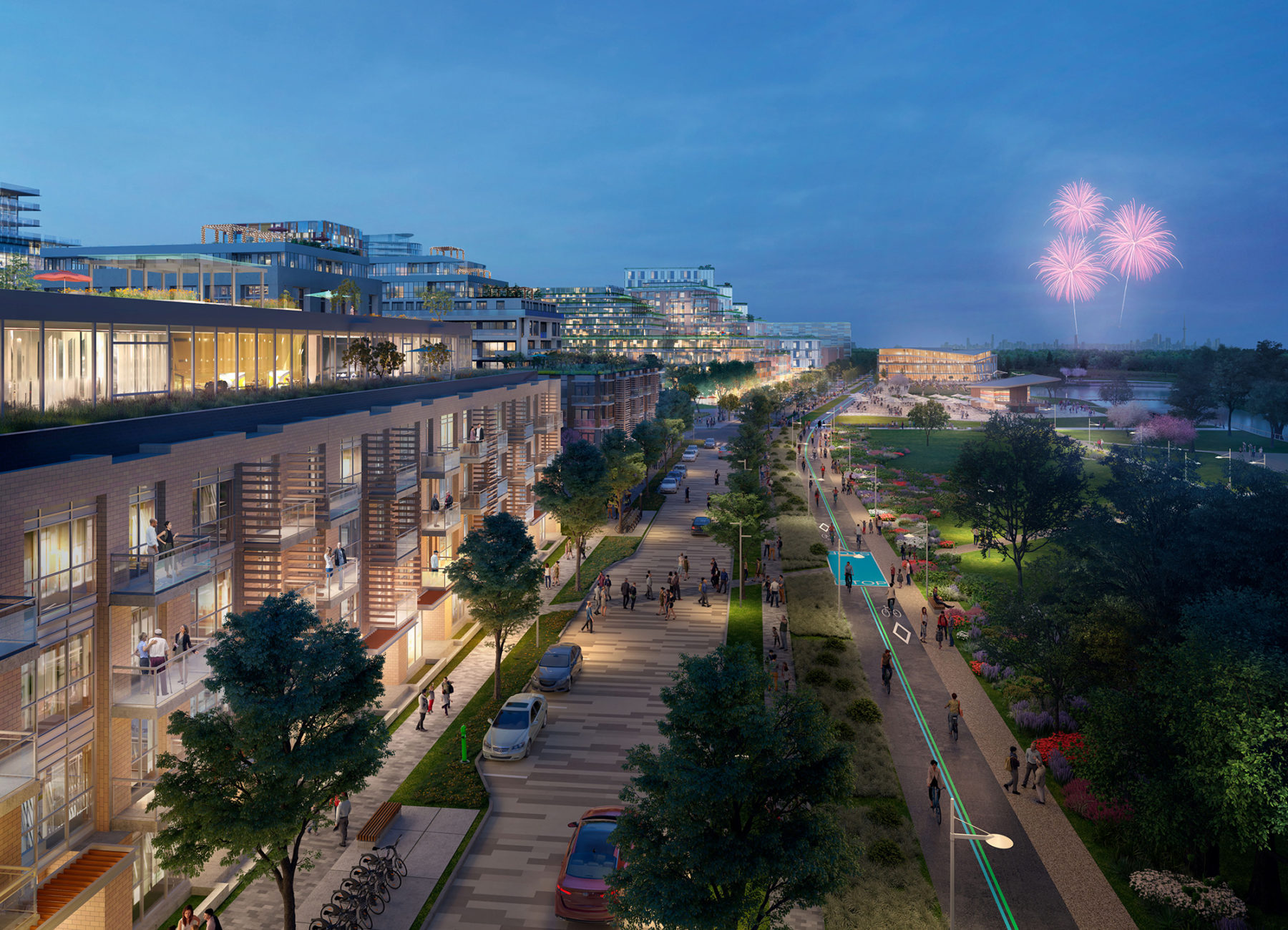
The design of the waterfront including the main street creates a pedestrian and bike-friendly environment
The master planning of the site began as a grassroots community process over a decade ago, and was one of the first examples of community driven, bottom-up planning in the Greater Toronto Area. The community knew that when the power plant closed, they wanted something great to take its place. Since then, the city of Mississauga has worked closely with the community to develop the master plan, and chose Lakeview Community Partners Limited (LCPL) as a development partner. Since then, LCPL have led the effort to meaningfully re-engage the community and progress the masterplan vision for a vibrant and unique community along the waterfront. Sasaki joined the in-process project as Master Plan Architect, and was charged with revitalizing, rationalizing, and making implementable the work that had been done previously. Together with LCPL, local consultants, and other stakeholders, Sasaki has created a master plan, a landscape framework, and overall design for Lakeview Village, working to incorporate the community’s input and comments on the plan.
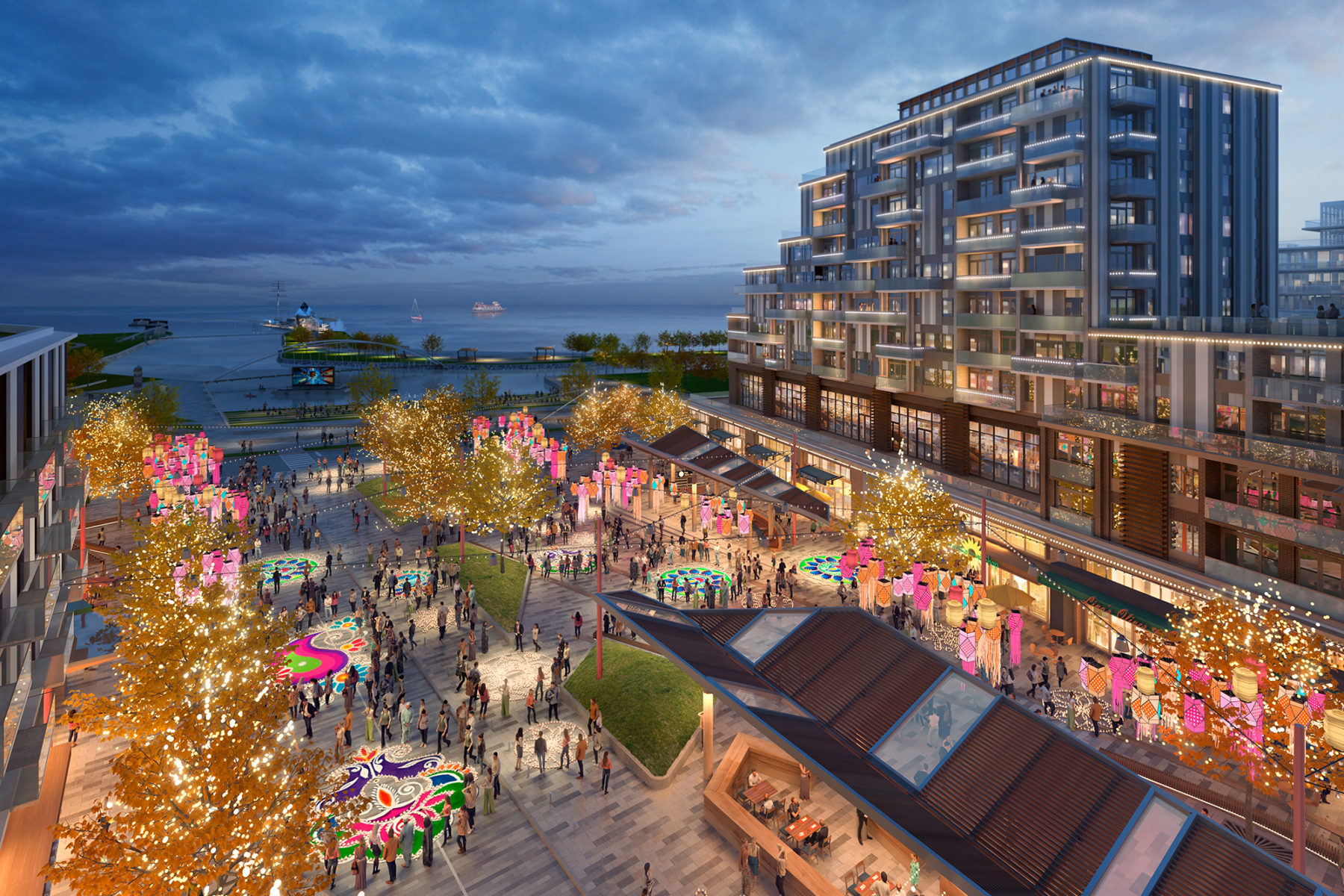
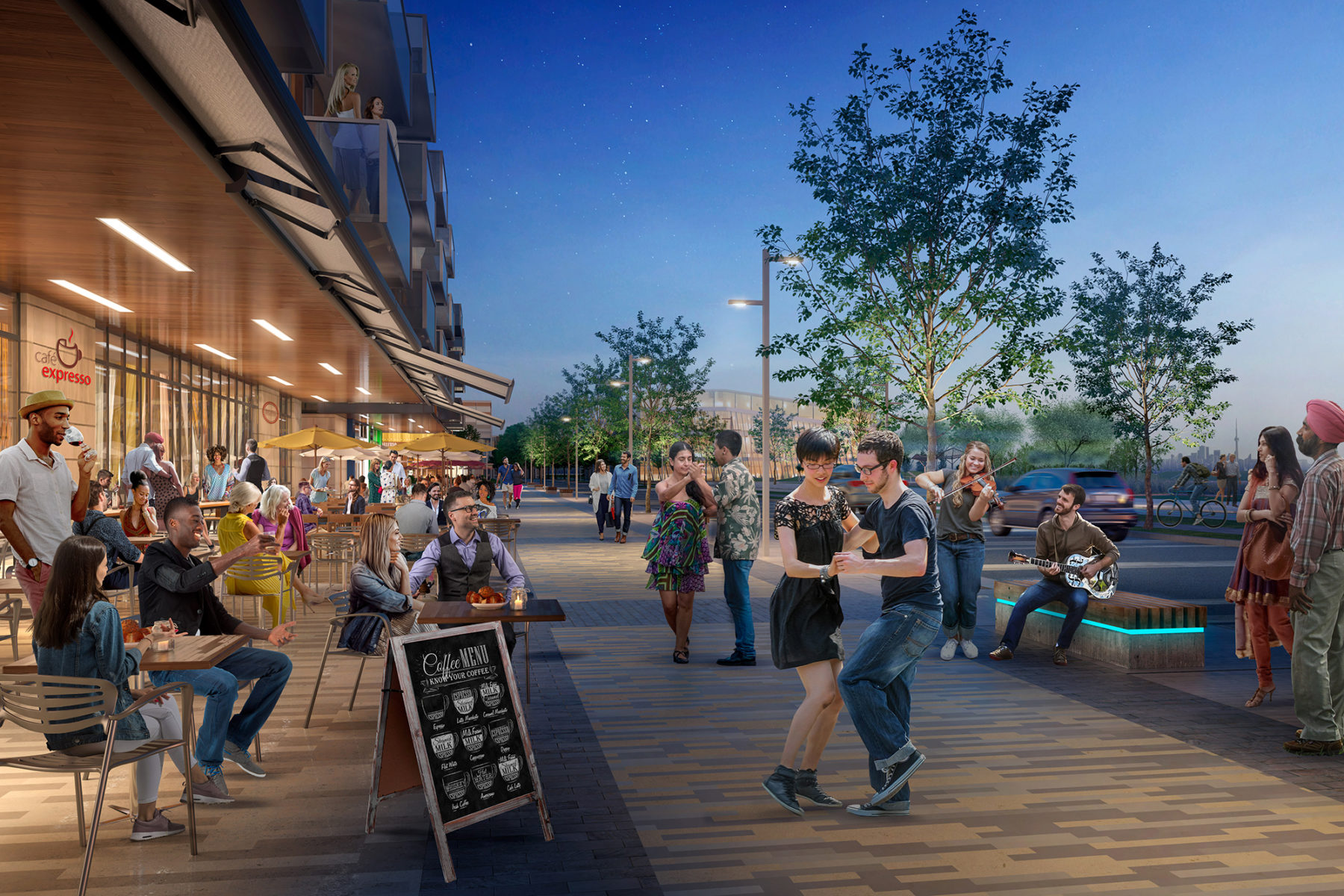
Retail experiences that take advantage of the waterfront location will help create a dynamic, rich experience for visitors
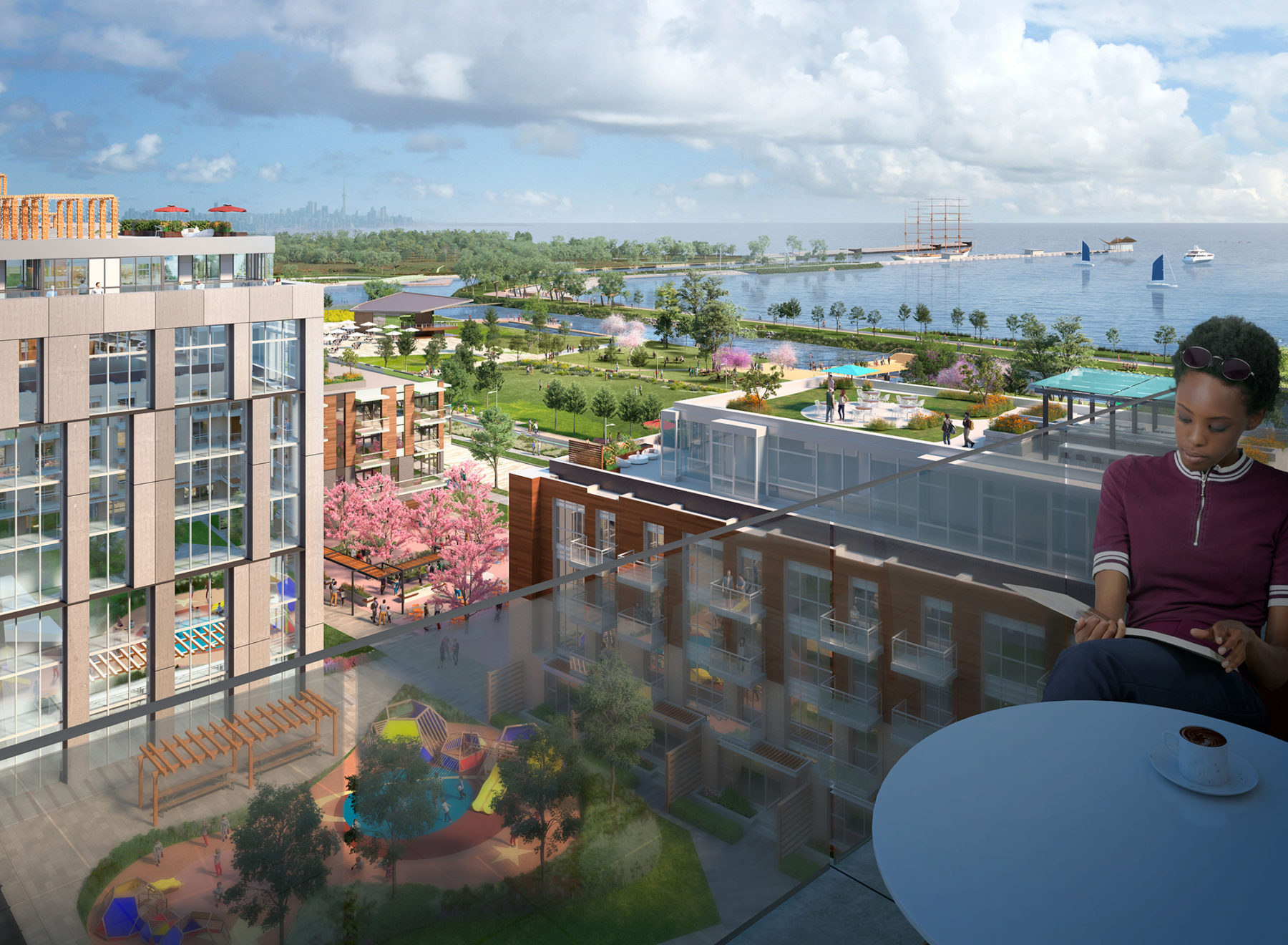
Lakeview introduces waterfront living opportunities that haven’t been previously available
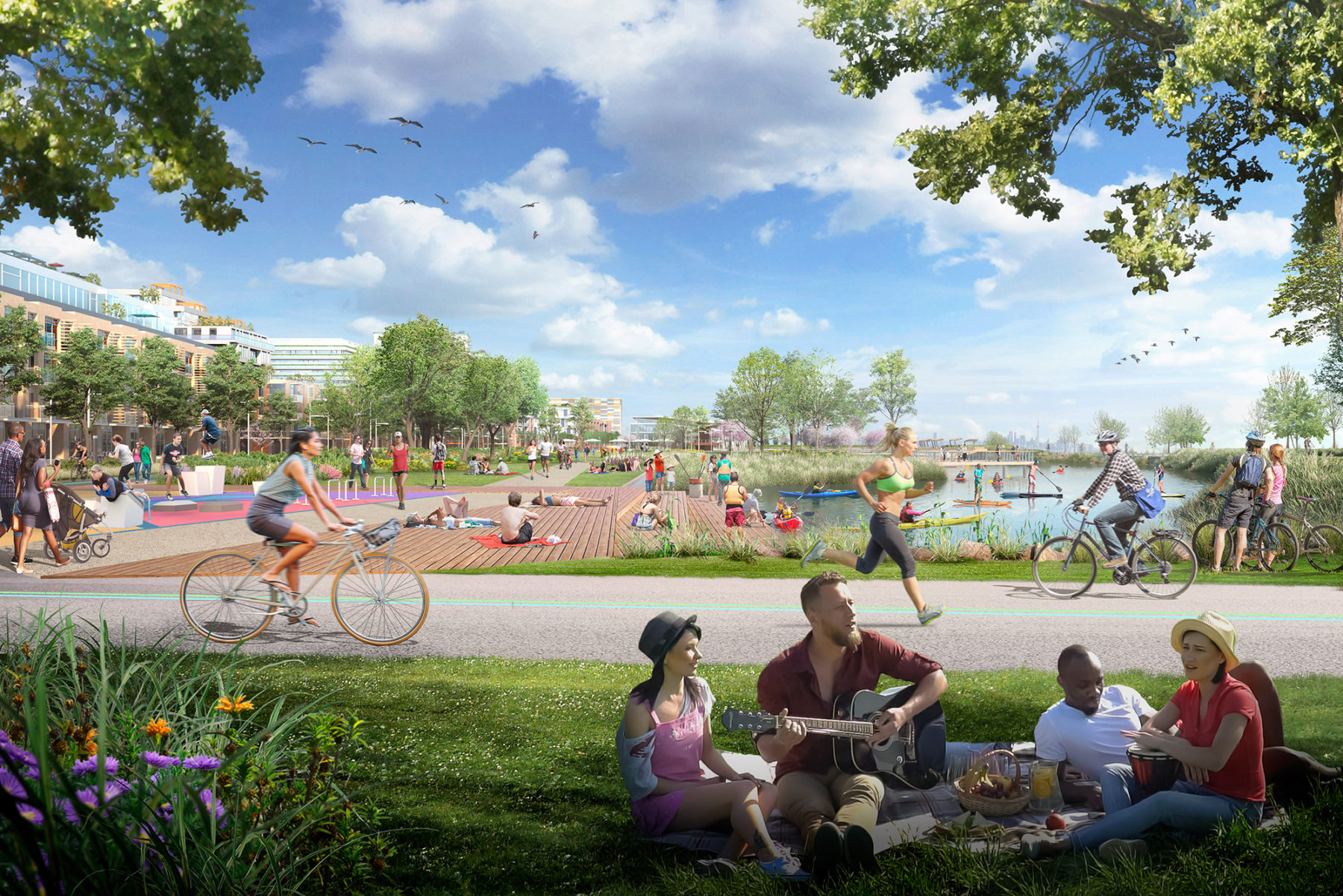
The lakefront park is envisioned as a new regional destination
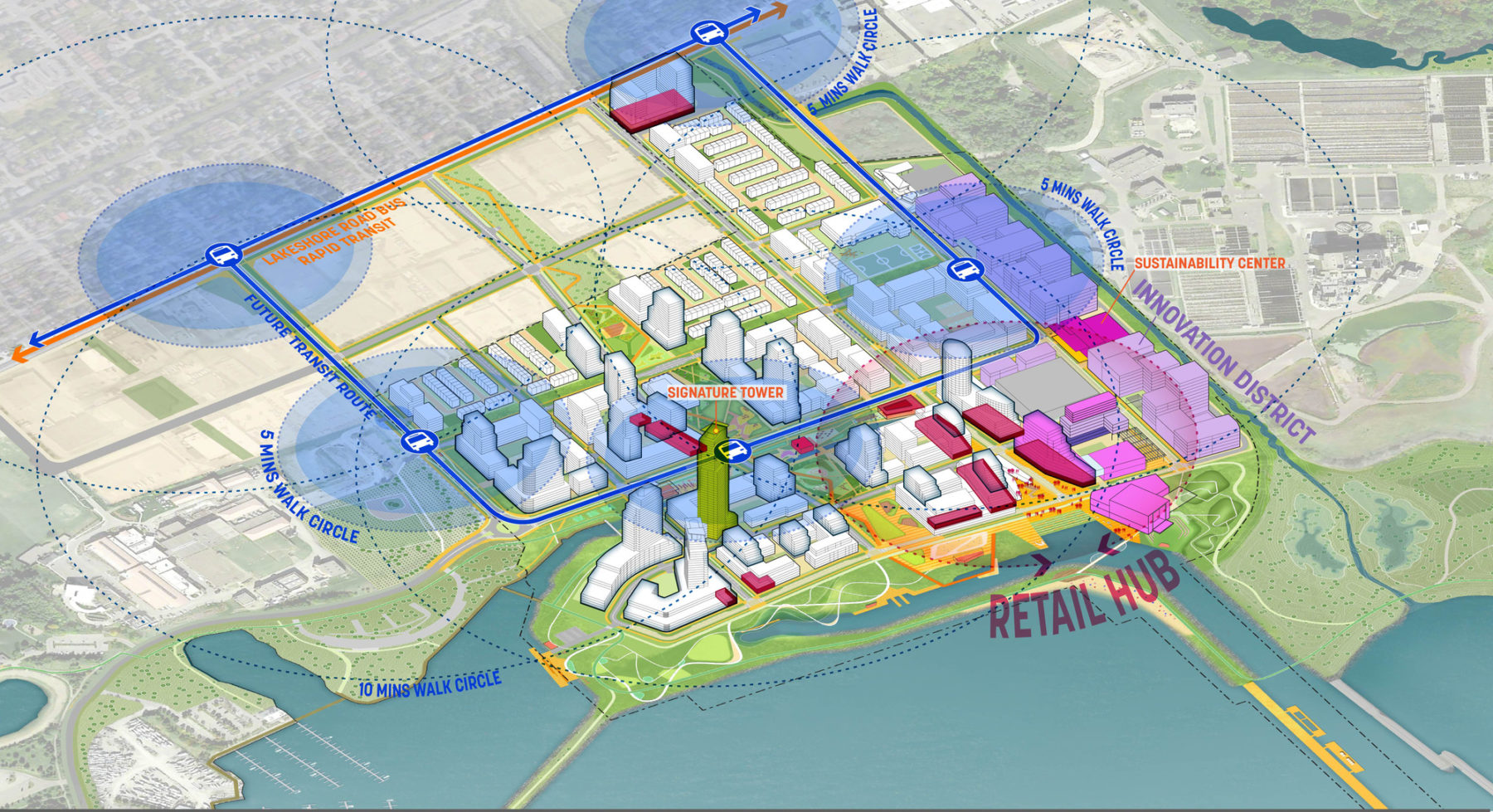
Future transit connections will incorporate Lakeview into the greater Toronto area
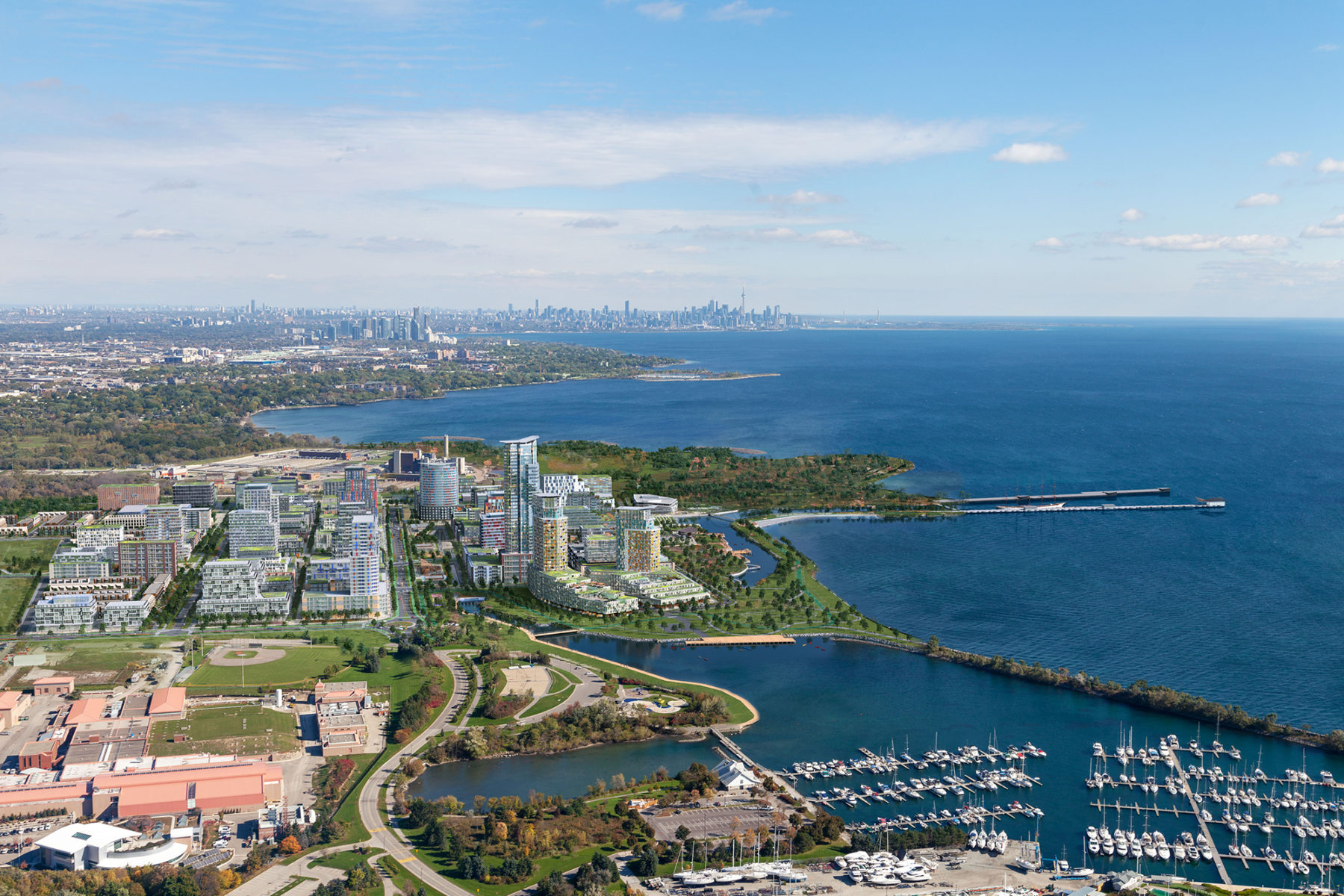
Lakeview is identified as one of the “major nodes” for the city of Mississauga
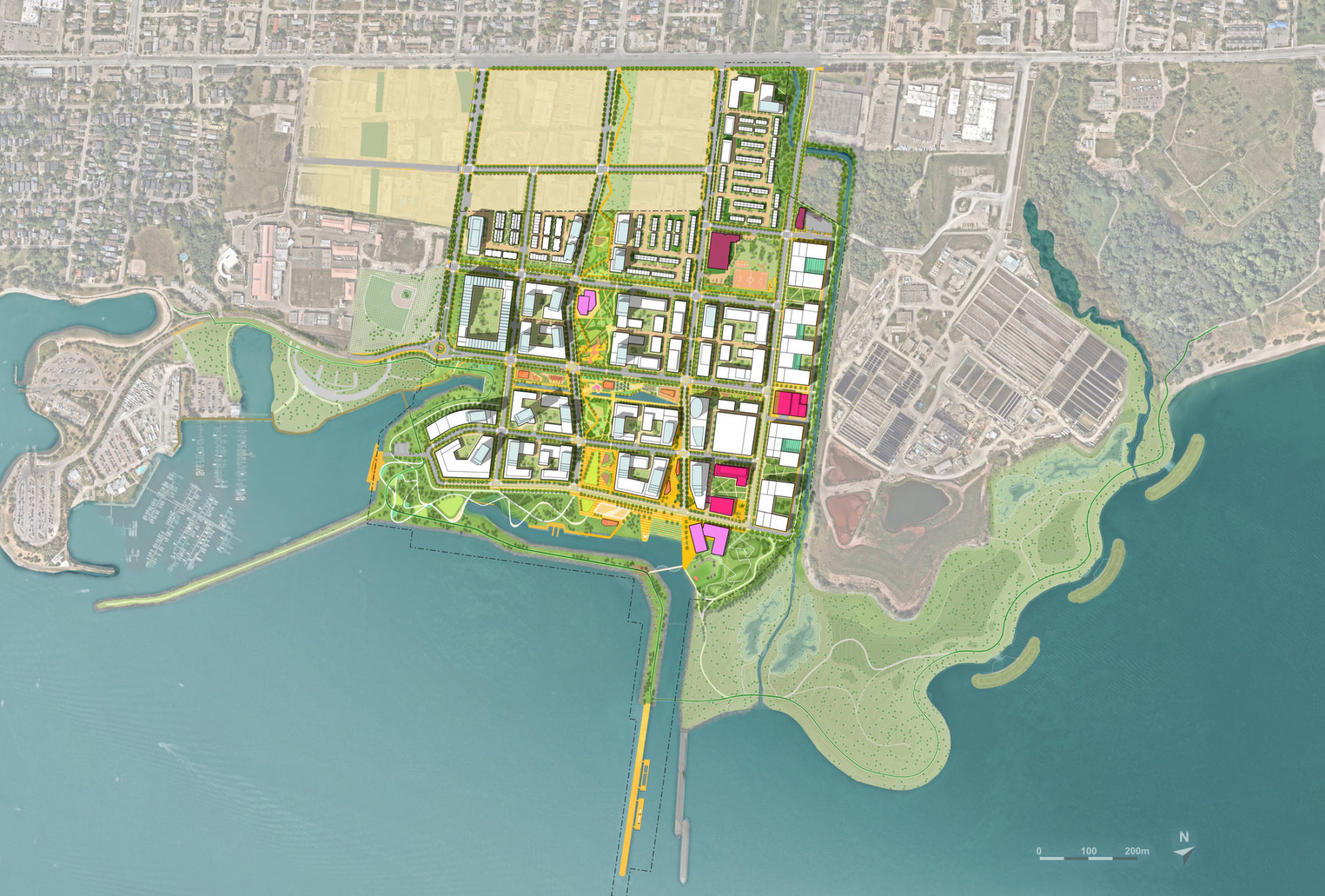
Site plan
The aim of the master plan is to establish a firm urban design framework that provides a foundation for future evolution of Lakeview. The framework establishes the central gestures or “big ideas” that define the character of the place. The large-scale moves are bold and resilient, providing a public realm armature that will be framed by buildings designed by multiple architectural firms. Strong connections between Lakeshore Road (the site’s northern boundary and direct connection with the city) and the Lake Ontario shoreline are made through the open space network, and the transportation network. The bold central park, Ogden Park, and the waterfront destination, Lakefront Park, create an upside-down “T”, around which other key elements of the plan are arranged. The north-south orientation of Ogden Park provides numerous opportunities for the location of taller buildings in a way that does not cause these buildings to form a “wall” between the existing communities and the Lake. The specific geometries of the plan, which “invite” the lake visually into the site, increase the number of building faces that will have views to Lake Ontario. The blocks along the lakefront and throughout the plan strategically locate mid-rise residential in order to maximize views from buildings further back from the lake, and to create a low-scale experience of the buildings fronting onto the Lakefront Park.
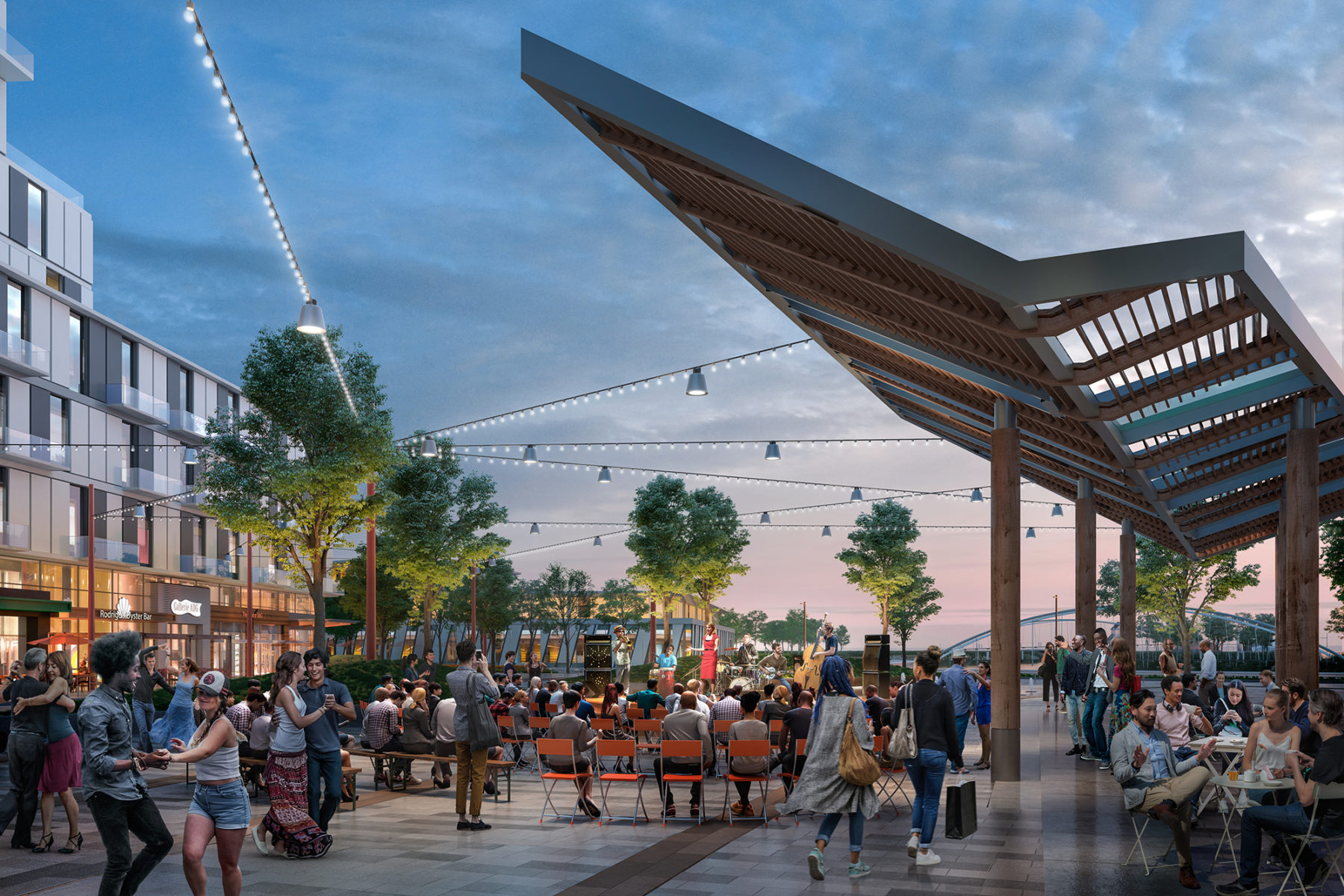
Lakeview Square will be the retail and cultural heart within the district
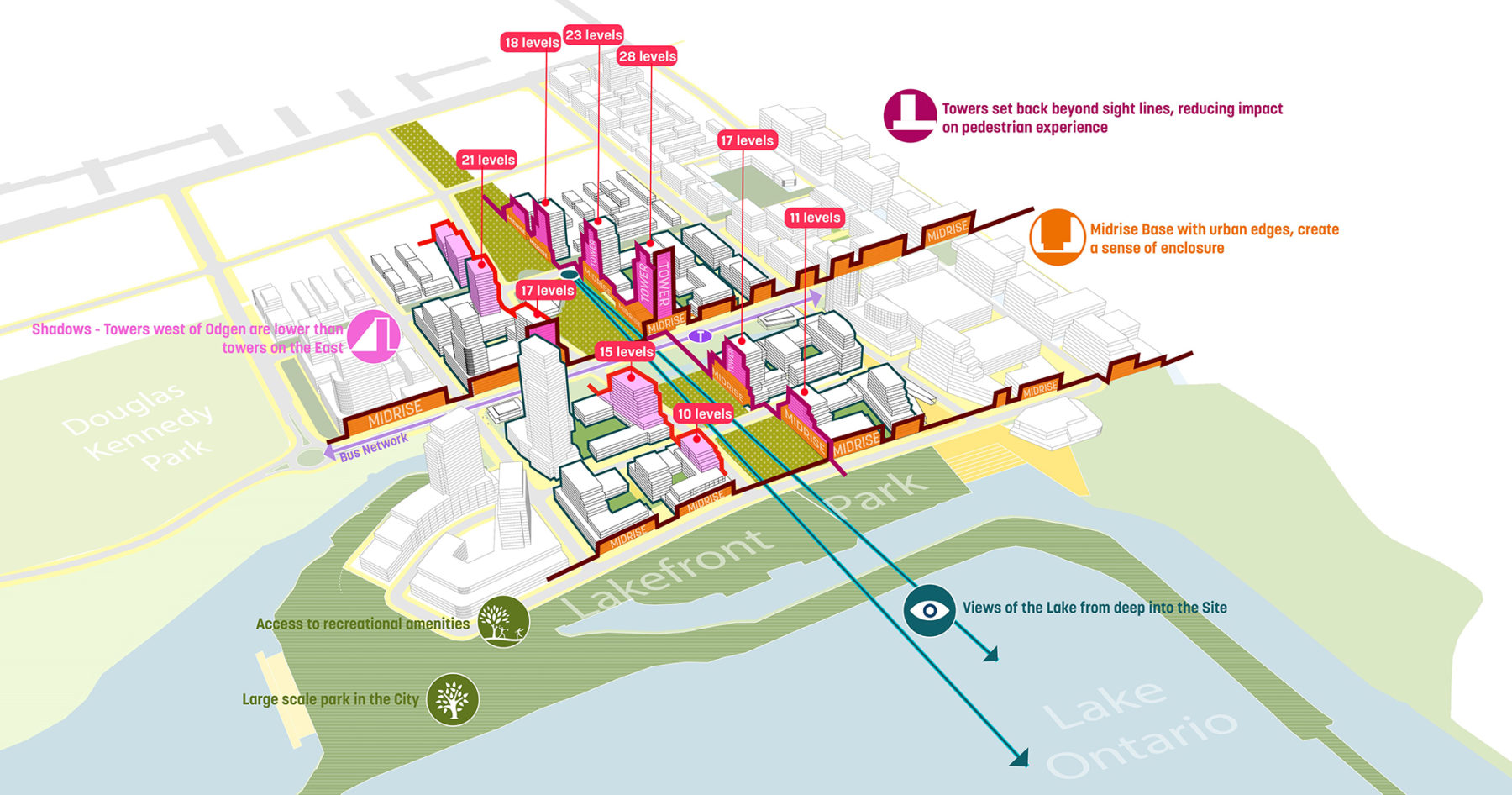
The orientation of the central park allows for views of the water from buildings deep into the site
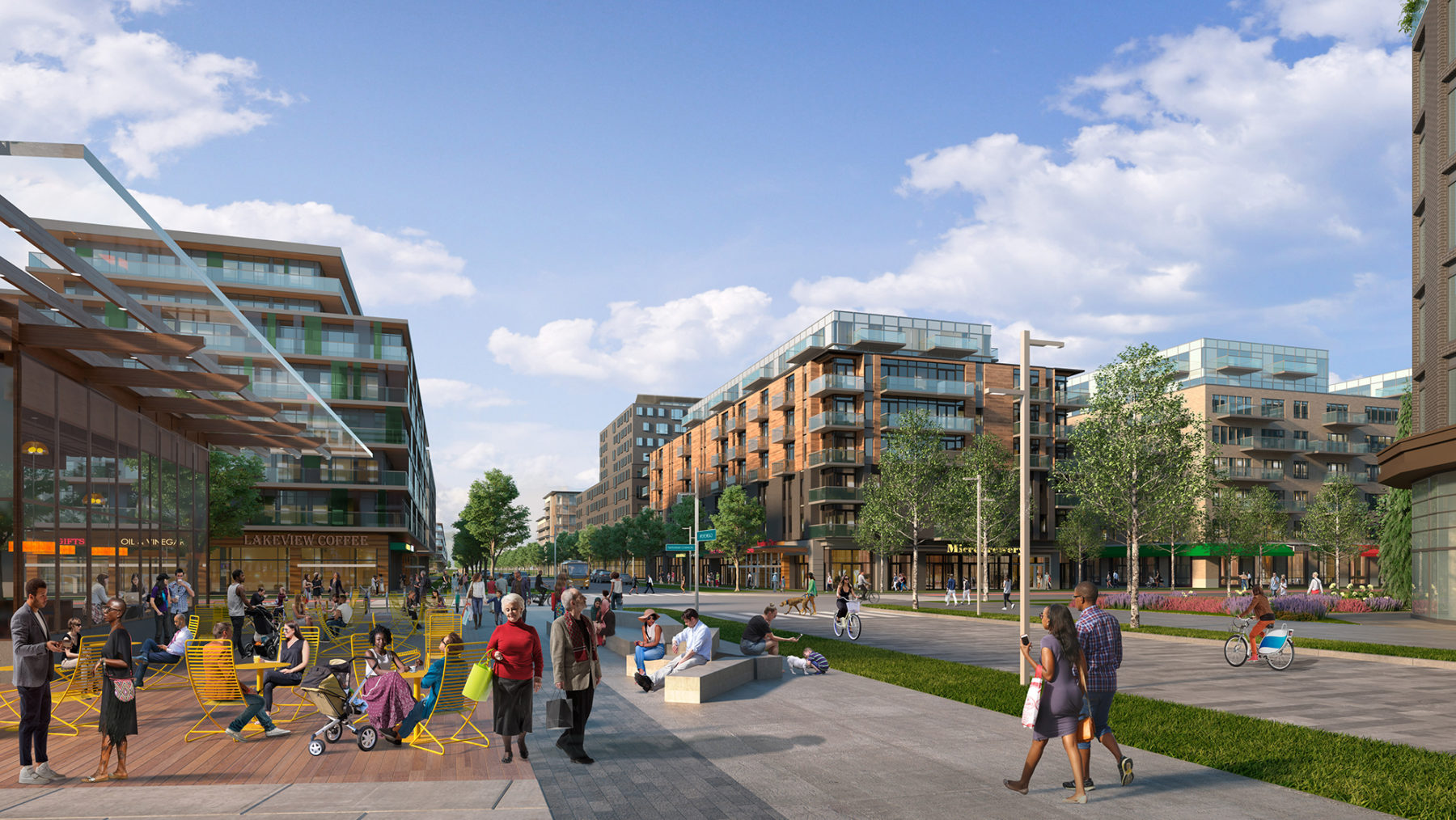
The Northern part of the district is characterized by mid-rise residential clusters
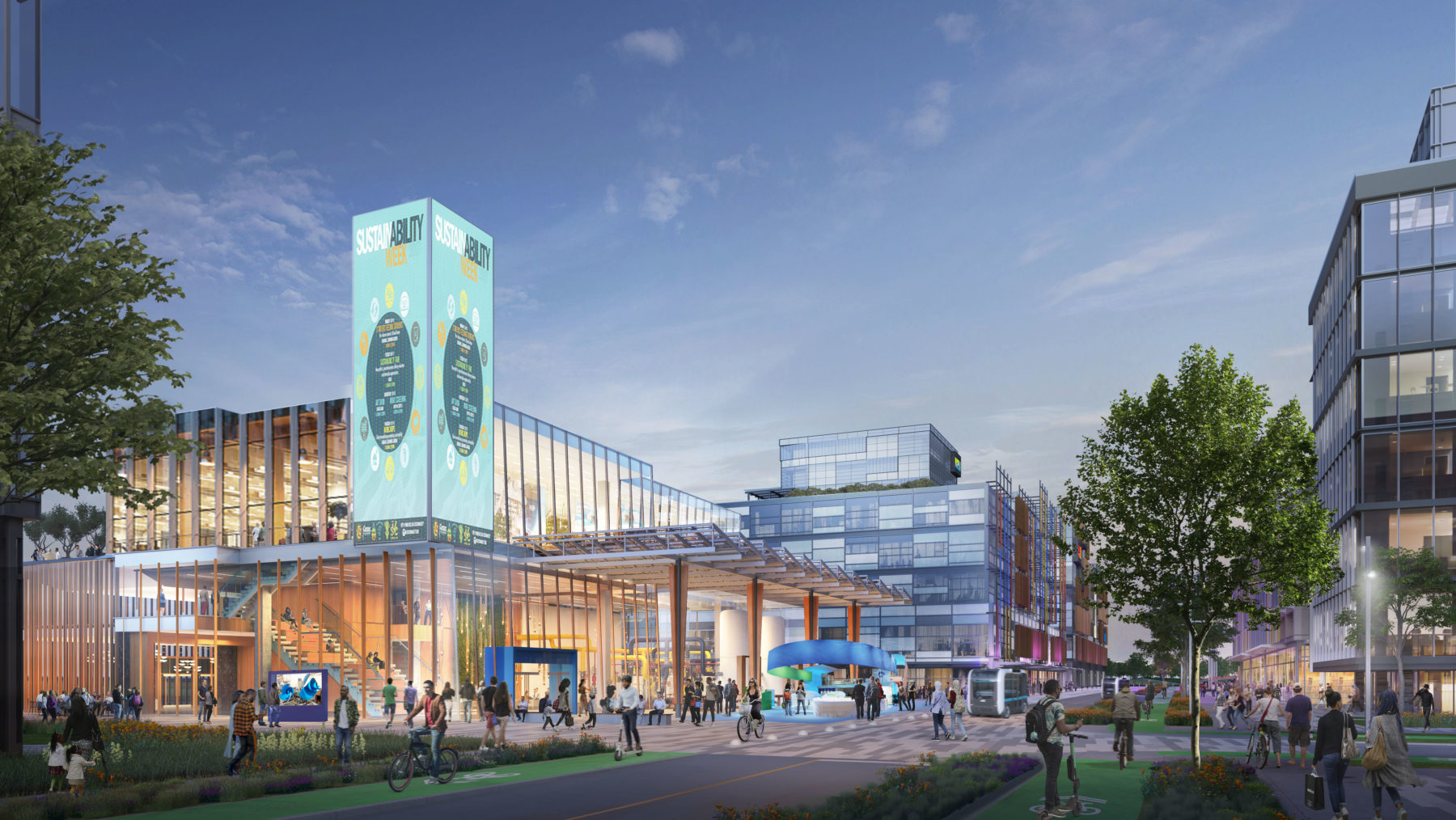
Part of Lakeview will be an innovation district
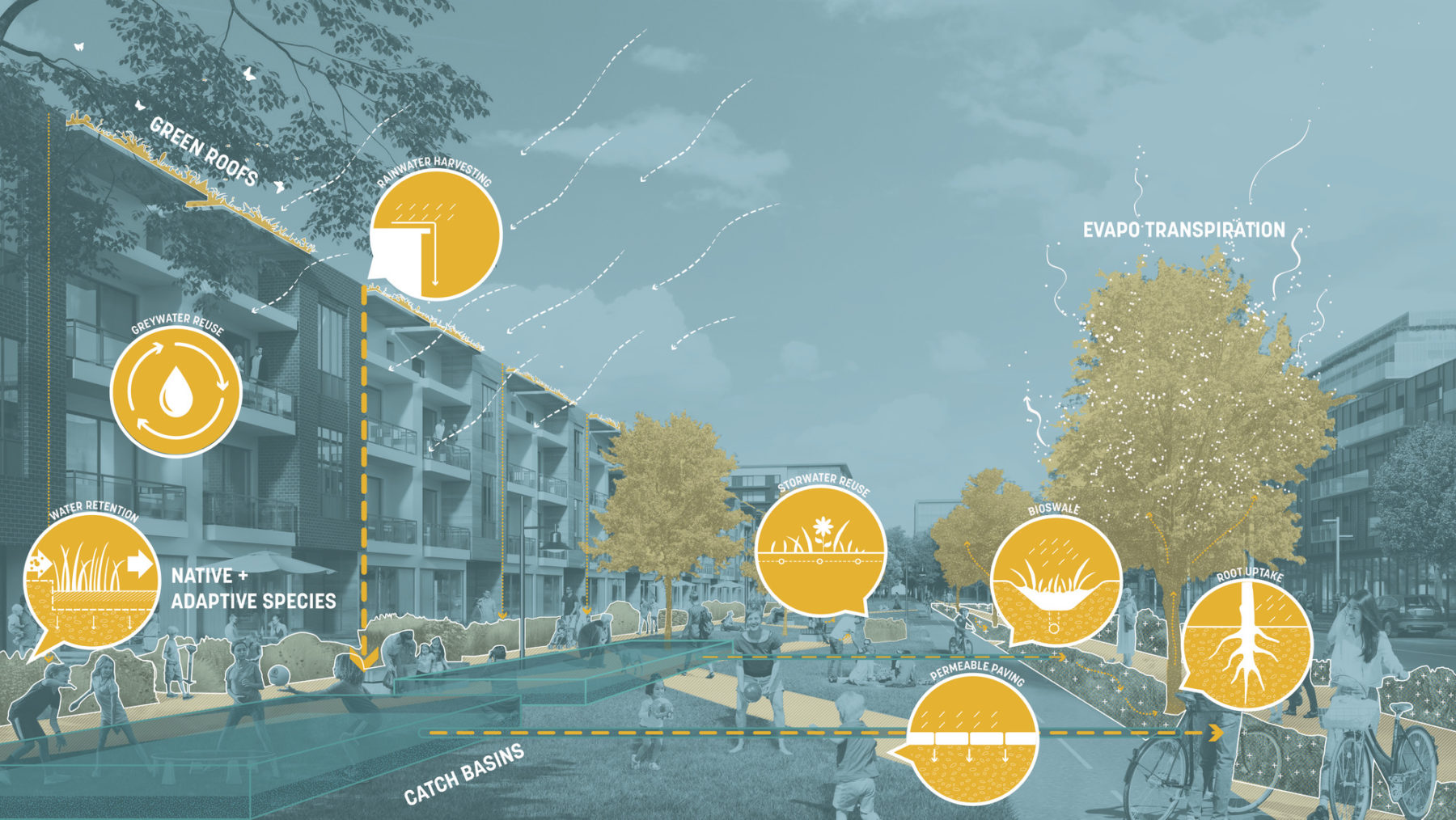
The design team incorporated a number of different stormwater strategies across the site
With approximately 28,000 inhabitants and workers, supplemented by numerous daily and special-event visitors, Lakeview will become Mississauga’s vibrant waterfront, as well as a leading example of sustainable, high-intensity development that maintains and enhances quality of life for all. To achieve this in the North American context, where parking ratios are considerable, requires close attention to great place-making while accommodating complex underpinning metrics.
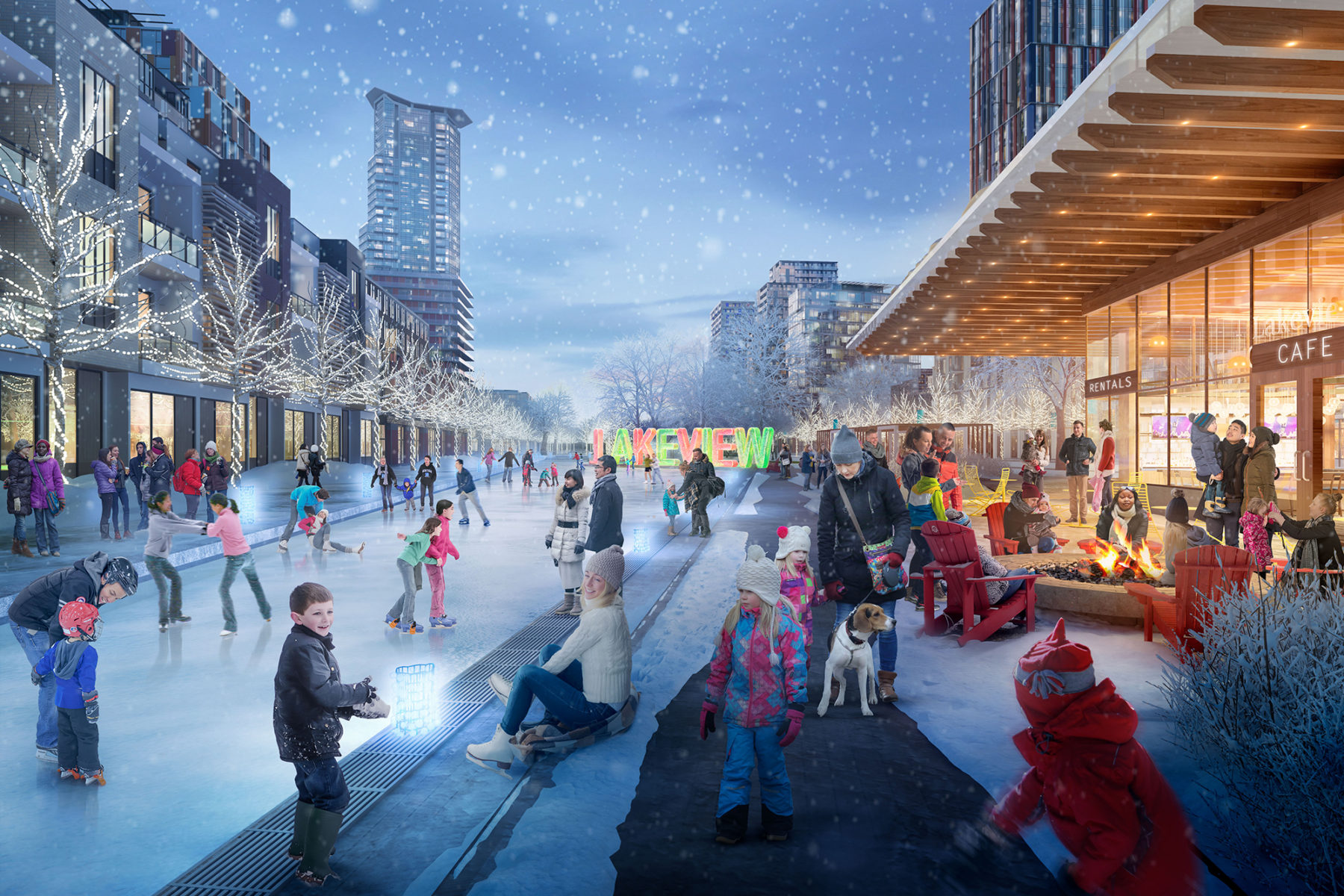
The plan for Lakeview Village incorporates a series of community-oriented public spaces, to provide gathering places for future residents in all seasons
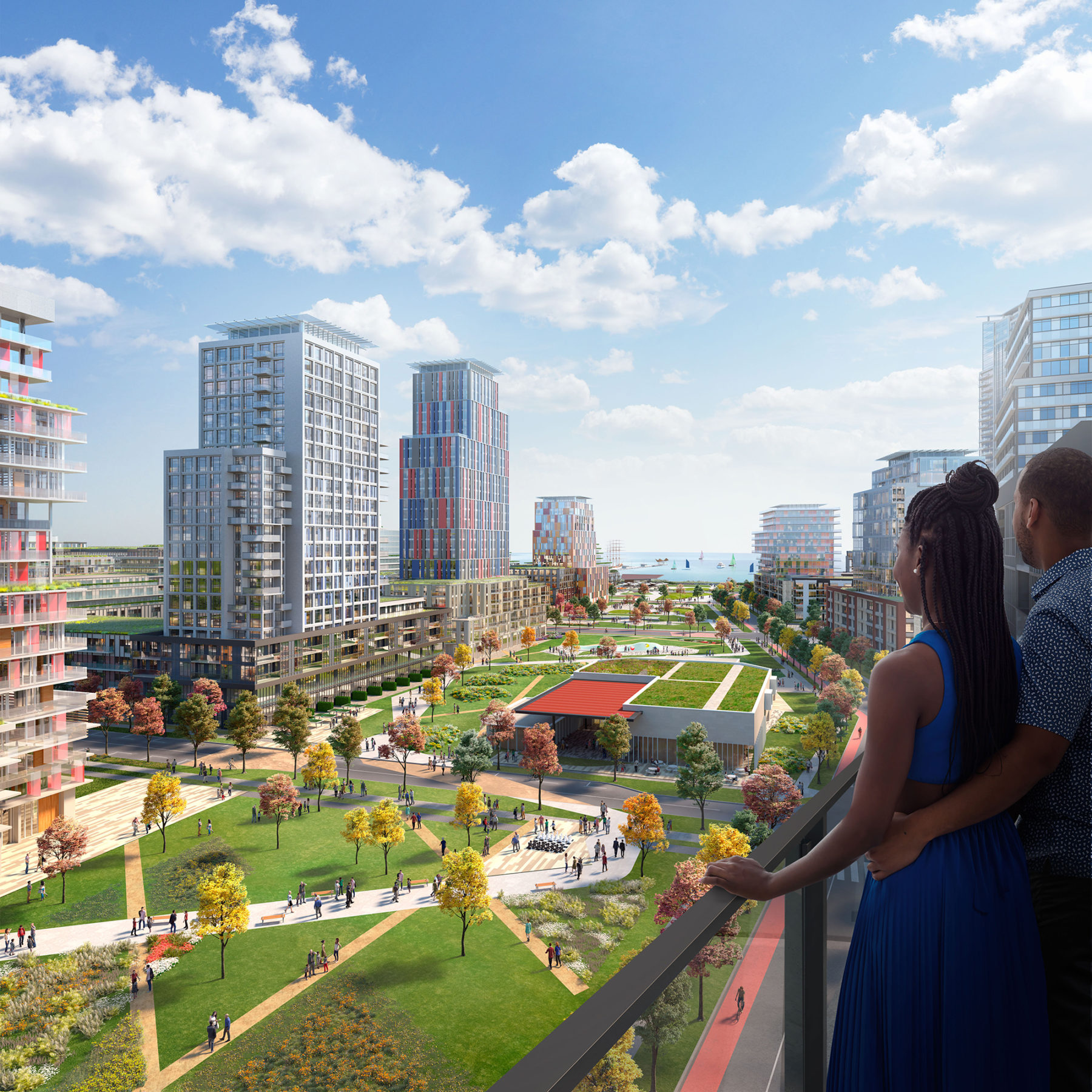
The central park includes a new cultural facility that functions as a hub for local art
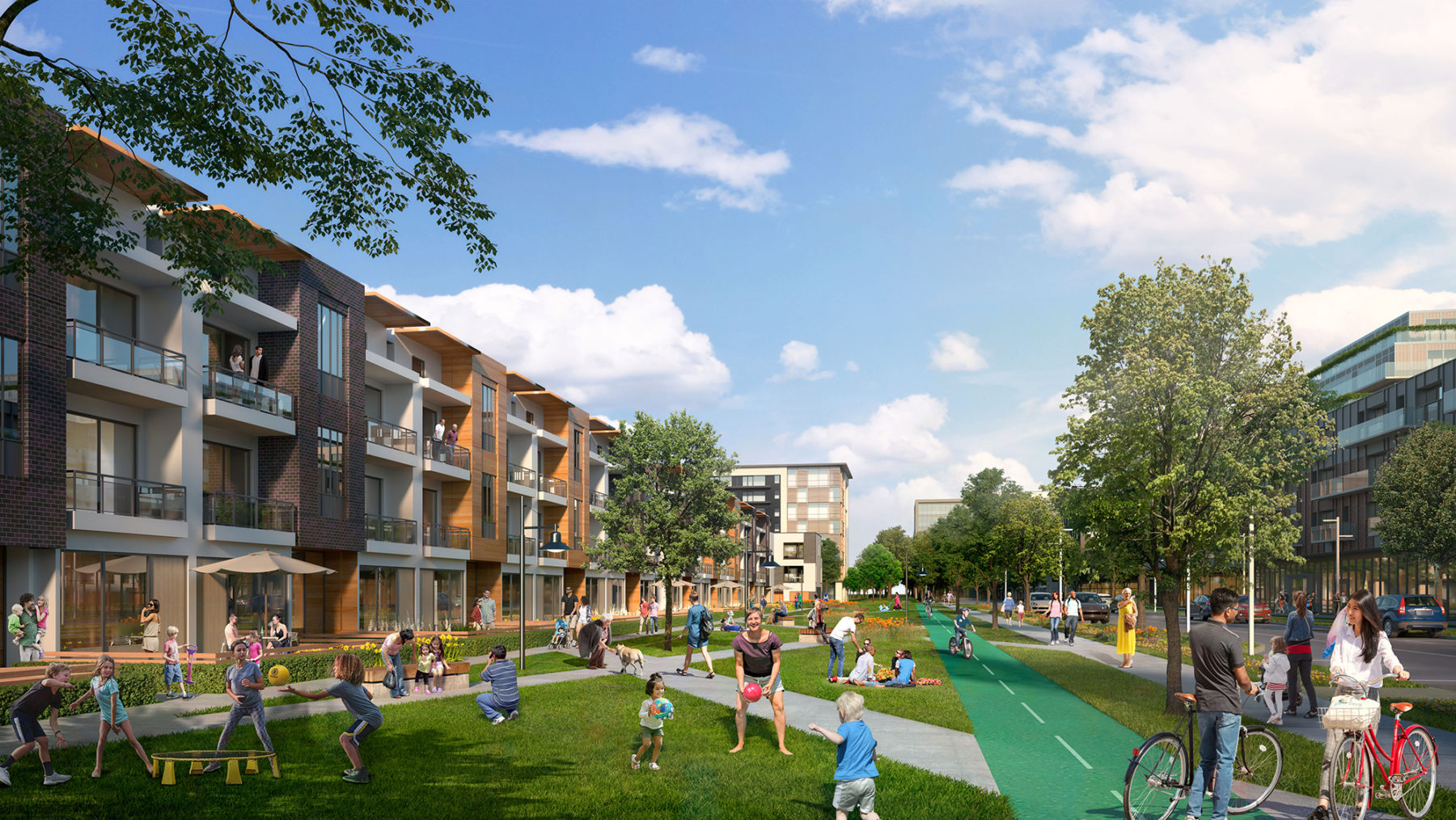
Different sections of the district are connected through linear greenways and bike paths
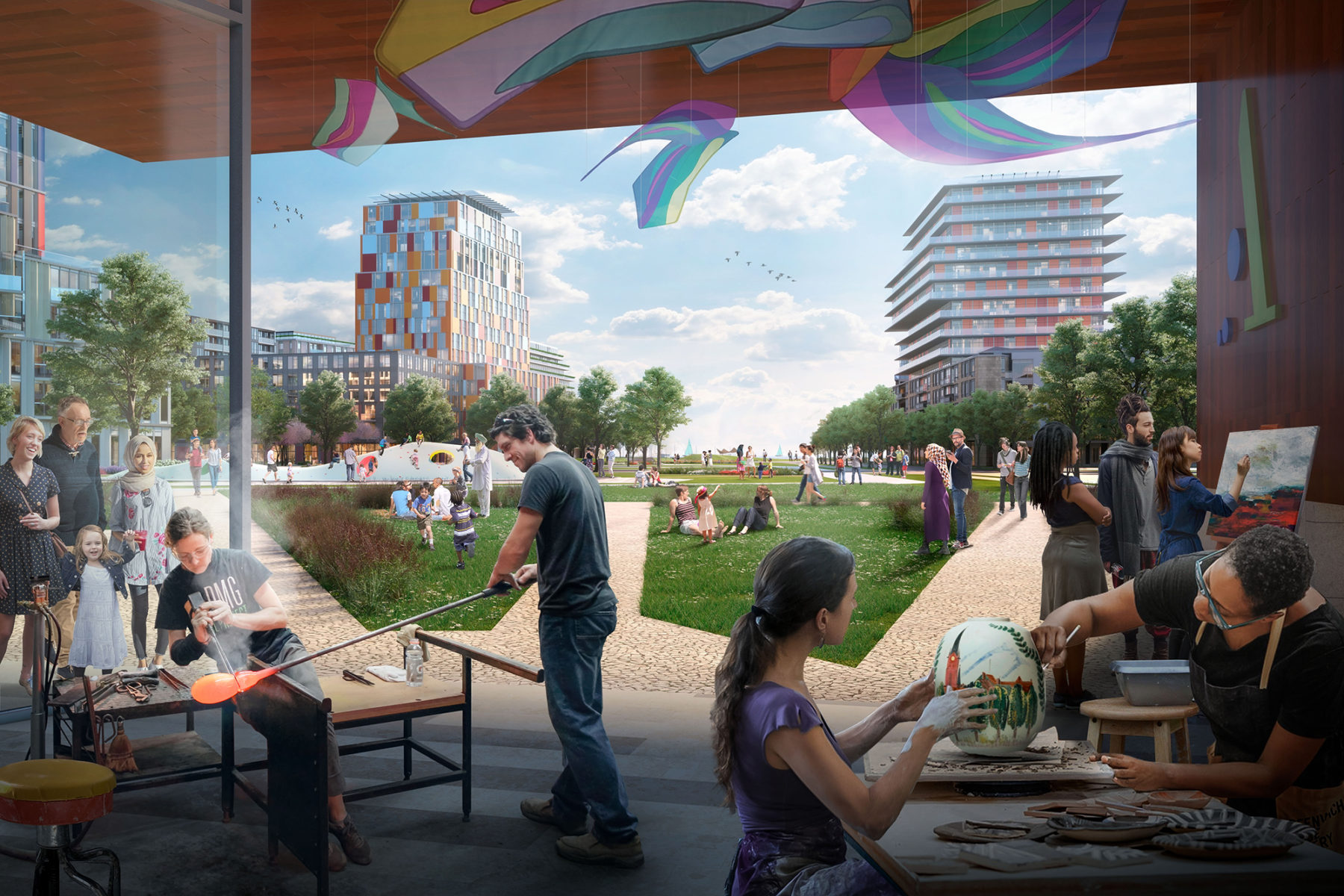
Part of the district vision is to celebrate local culture and connect residents to one another
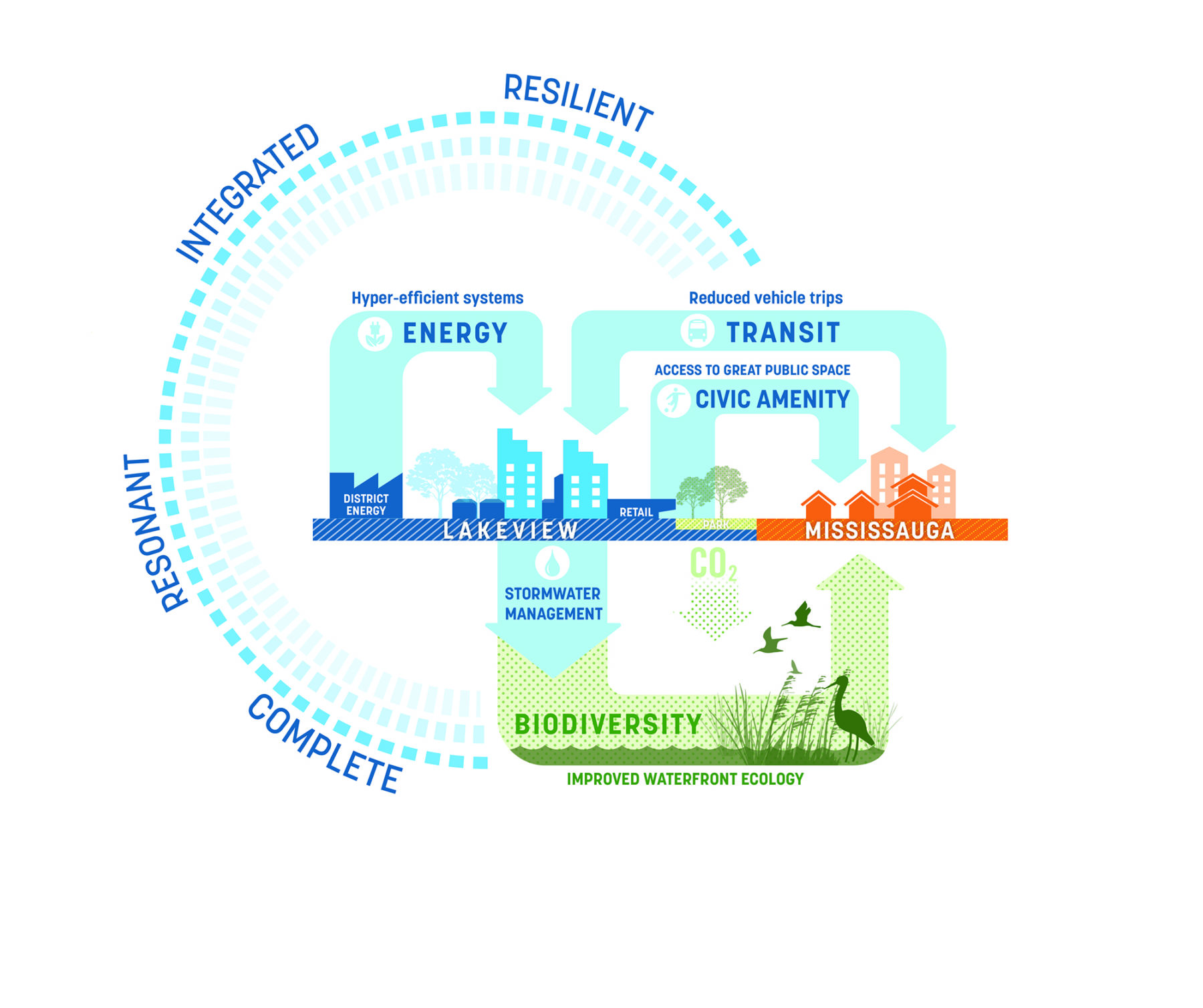
Through collaboration with local stakeholders Lakeview represents a unified vision for a new community
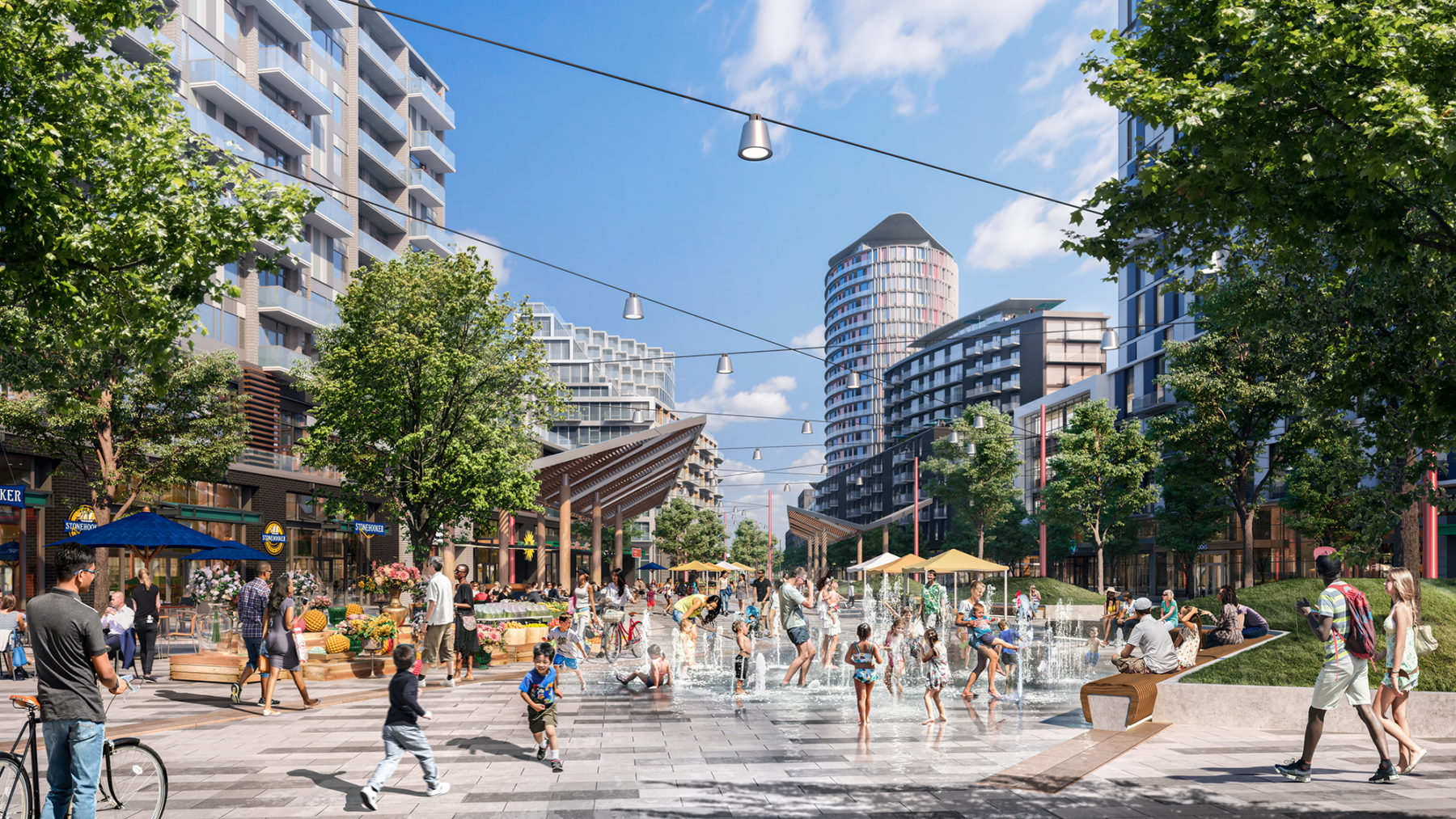
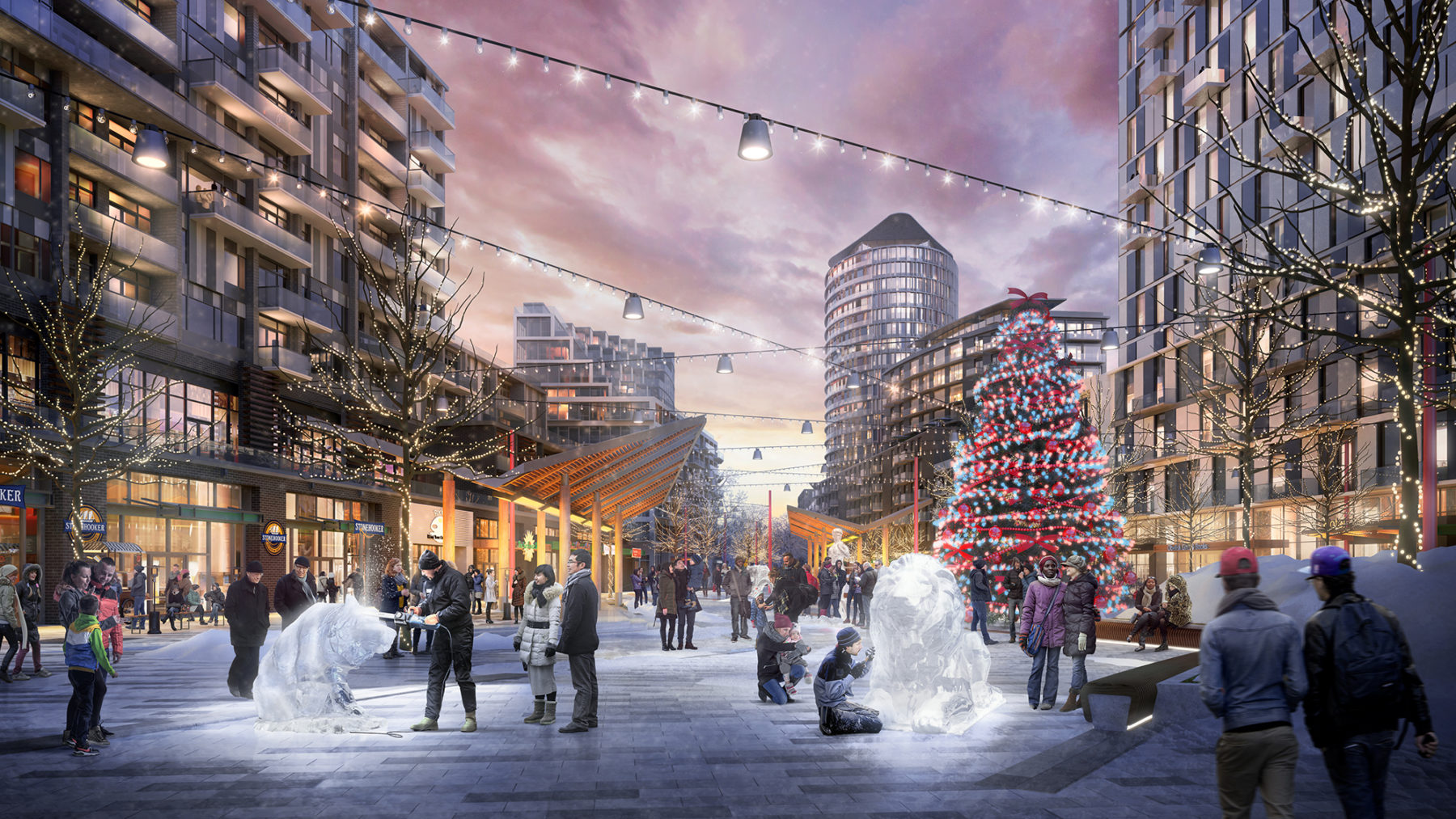
For more information contact Dennis Pieprz.
Sasaki joins the team that is reenvisioning the future of this Canadian neighborhood on the bank of Lake Ontario
An opportunity for the City of Mississauga community to see the latest plans for the 177-acre former power plant site on Lake Ontario